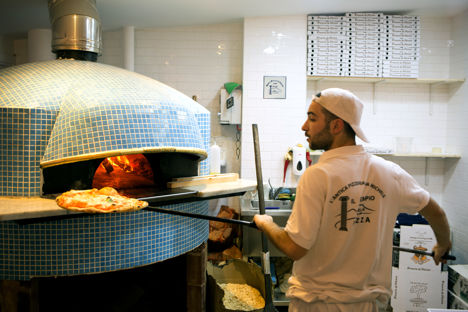
Neapolitan pizza-making: a UNESCO-recognised art
Luciana Squadrilli takes a look at the reasons why UNESCO decided to recognise the art of pizza making in Naples, and what this means for the hard-working pizzaiuoli.
Finally, Naples has gained UNESCO World Heritage status for its most iconic food, pizza – or, to be more precise, the craft of the traditional Neapolitan pizzaiuoli (known as pizzaioli outside of Naples), as the local pizza-makers love to call themselves. It’s now included in the Representative List of the Intangible Cultural Heritage of Humanity, joining other important food cultures such as the Mediterranean diet, French cuisine and Belgian beer culture. It also joins some lesser-known traditions such as the dolma making and sharing from Azerbaijan and the nsima culinary culture of Malawi, both also awarded in 2017.
After the final announcement of the twelfth session of the Intergovernmental Committee for the Safeguarding of the Intangible Cultural Heritage (held in the South Korean island of Jeju) and the official declaration made on 9 December, some of the best pizzaiuoli in town – Antonio Starita, Enzo Coccia, Ciro Oliva and Gino Sorbillo – decided to offer free pizza fritta and pizza a portafoglio, the emblems of Neapolitan street food tradition, to passers-by. ‘This important acknowledgement is not only for us, but for the Neapolitan people,’ said Gino Sorbillo. ‘We are history, fathers and sons,’ added Enzo Coccia, while Antonio Starita said: ‘They finally gave us the ability to take Neapolitan pizza all over the world.’
On 14 December, a huge public event was held in Naples’ central Piazza del Gesù to celebrate such a major recognition, with 100 pizzaiuoli attending and over 5,000 pizzas baked. And if the clamour of the celebrations didn’t match that of when the local football team won the league in 1987 (when the legendary Argentinian player Diego Armando Maradona was part of the team), it was only because most of the people joining the revelry were too busy devouring the free pizzas.
The UNESCO acknowledgement was much longed for by the whole city. An international petition was launched and promoted since 2015 by the politician and former Ministry of Agriculture Alfonso Pecoraro Scanio and the Neapolitan pizza associations (after the rejection of a first application in 2011 for bureaucratic reasons). The petition gathered many famous supporters. But what exactly does UNESCO recognition for Neapolitan pizza mean? And how will it effect the world-acclaimed culinary masterpiece?
First of all, let’s be clear: it is not the pizza itself that’s been recognized by UNESCO. Pizza Napoletana is already strictly regulated and certified by Italian regulations to include specific ingredients and must be cooked in a wood oven, while the Pizza Margherita is protected by the EU’s TSG certification. Instead, the acknowledgment refers to the art of the Neapolitan pizzaiuolo, which is ‘a culinary practice consisting of four different phases relating to the preparation of the dough and its baking in a wood-fired oven’. The practice originated in Naples, where around 3,000 pizzaiuoli now live and perform, and plays a key role in fostering social gatherings and intergenerational exchanges. Knowledge and skills are primarily transmitted in the bottega (shops) of the pizzaiuolo, where young apprentices can observe their master at work.
The city is just as proud of its pizza-makers as it is of its cherished pizza. Born as a humble, cheap street food to fill the stomach and satisfy the taste buds, through the years Neapolitan pizza conquered the world and gave birth to many different variations, thanks to its makers who left the city to try their luck elsewhere in Italy or abroad – thus spreading their art across the globe. Over the last ten years the world of pizza in Italy has seen a massive rise in popularity, with the improvement of rising techniques, better quality ingredients and the achievement of recognised culinary status. Potentially threatened by the success of different kinds of ‘modern pizza’ – such as the Northern-style, ‘gourmet’ pizza served in single slices, each of them carefully plated like a haute cuisine dish with the finest ingredients – the Neapolitan pizzaiuoli reacted and were able to keep their beloved pizza as a food of the people, at the same time improving the average quality and making it even more delicious.
‘The art of Neapolitan pizzaiuoli has been acknowledged by UNESCO, valuing its origins and rediscovering the skill of the Neapolitan pizza-makers,’ said Ciro Oliva, a young and highly acclaimed pizzaiuolo. ‘It’s an art which, instead of becoming extinct over the years, has grown exponentially. The credit certainly goes to the pizza craftsmen who, with love, passion and innovation, continue this extraordinary job, but most of all we have to thank all those who passed on the required skills from generation to generation.’
Indeed, the main result of the UNESCO recognition will hopefully be exactly this: revitalised pride, collaboration and commitment to make Neapolitan pizza tastier than ever.



